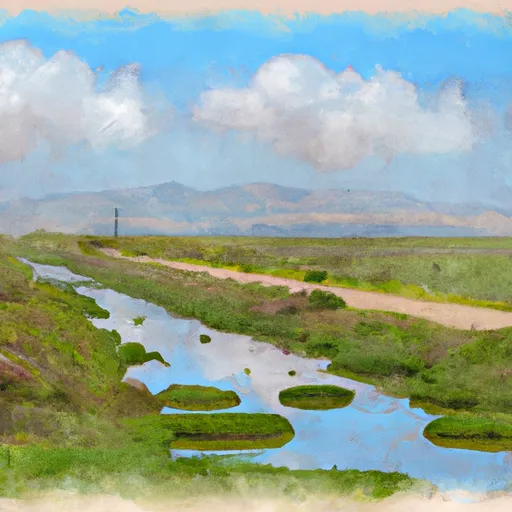Merced National Wildlife Refuge
Rate this placeNearby: Pierini Park Des Park
Last Updated: December 29, 2025
Merced National Wildlife Refuge is a 10,258-acre wildlife sanctuary located in the Central Valley of California.
°F
°F
mph
Wind
%
Humidity
Summary
The refuge protects wetlands, grasslands, and riparian habitats, making it home to an impressive array of birds and other animals.
One of the main reasons to visit the Merced National Wildlife Refuge is for birdwatching. The refuge is a critical stop for migratory birds along the Pacific Flyway, with over 300 species of birds recorded here. Visitors have the opportunity to see large flocks of snow geese, sandhill cranes, and other waterfowl during the winter months.
Other points of interest at the refuge include the auto tour route, which takes visitors through the wetlands and offers opportunities to see wildlife up close. The Visitor Center also provides educational exhibits and programs, and there are multiple hiking trails to explore the diverse habitats.
Interesting facts about the area include that the refuge was established in 1951 to provide habitat for waterfowl and other migratory birds, and has since grown to include other endangered and threatened species like the Swainson's Hawk and the San Joaquin Kit Fox. The refuge also has a partnership with the nearby UC Merced for research and conservation efforts.
The best time of year to visit the Merced National Wildlife Refuge is during the fall and winter months, when the migratory birds are present in large numbers. However, spring and summer also offer opportunities to see resident birds and other wildlife. It is important to note that certain areas of the refuge may be closed during certain times of the year to protect nesting and breeding species.
Weather Forecast
Park & Land Designation Reference
Large protected natural areas managed by the federal government to preserve significant landscapes, ecosystems, and cultural resources; recreation is allowed but conservation is the priority.
State Park
Public natural or recreational areas managed by a state government, typically smaller than national parks and focused on regional natural features, recreation, and education.
Local Park
Community-level parks managed by cities or counties, emphasizing recreation, playgrounds, sports, and green space close to populated areas.
Wilderness Area
The highest level of land protection in the U.S.; designated areas where nature is left essentially untouched, with no roads, structures, or motorized access permitted.
National Recreation Area
Areas set aside primarily for outdoor recreation (boating, hiking, fishing), often around reservoirs, rivers, or scenic landscapes; may allow more development.
National Conservation Area (BLM)
BLM-managed areas with special ecological, cultural, or scientific value; more protection than typical BLM land but less strict than Wilderness Areas.
State Forest
State-managed forests focused on habitat, watershed, recreation, and sustainable timber harvest.
National Forest
Federally managed lands focused on multiple use—recreation, wildlife habitat, watershed protection, and resource extraction (like timber)—unlike the stricter protections of national parks.
Wilderness
A protected area set aside to conserve specific resources—such as wildlife, habitats, or scientific features—with regulations varying widely depending on the managing agency and purpose.
Bureau of Land Management (BLM) Land
Vast federal lands managed for mixed use—recreation, grazing, mining, conservation—with fewer restrictions than national parks or forests.
Related References

 Pierini Park
Pierini Park
 Des Park
Des Park
 Los Banos Wildlife Area
Los Banos Wildlife Area
 National Wildlife Refuge San Luis
National Wildlife Refuge San Luis
 Macready Park
Macready Park